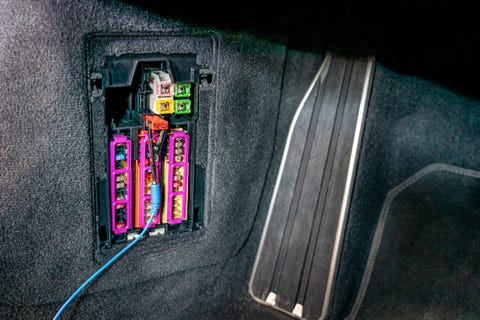
Marc UrbanoCar and Driver
From the August 2020 issue of Car and Driver.
You probably haven’t paid much attention to the new Porsche 911’s standard electronic pop-out door releases. They’re frivolous but ultimately harmless, right?
That’s what we thought, too, until we were perusing the owner’s manual—what, that’s not the first thing you’d do in a new 911? Right there on page 66, it says, “After the battery has been disconnected, a door which was previously unlocked cannot be opened from the outside,” and then it advises the owner to “open the window before disconnecting the battery.”
This seemed odd. Could a dead battery really transform an unlocked door into a locked one? We had to find out, so we disconnected the battery. Lo and behold, it’s true. Without power, the 911’s outside door handles no longer actuate the latch, even though the car was previously unlocked. To restore the handle’s functionality in this situation, you’ll need to remove the mechanical key concealed in the fob, insert it into the lock cylinder under the driver’s door handle, and give it a twist. This will also unlock the locked door.
Porsche is no stranger to electronic releases. The 911’s frunk latch has used one since the 996 launched for 1999. And the company has always provided a workaround for opening the frunk when the car’s battery dies, which, since 2002, involves applying 12 volts to a pin in a fuse panel.
There is no federal requirement that says an electronic door latch needs to have a backup mechanical release for the outside or inside of a door, but nearly every automaker provides one. Typically, there’s a traditional lock cylinder on the exterior, though some are hard to find; McLaren puts it on the underside of the car, for instance. And vehicles without a backup method of unlocking a door from the outside (such as Teslas) at least have provisions to pop the hood so you can restore power to the 12-volt system.
Interior overrides vary more widely. Lincoln offers one for the driver’s door only, and unless you know that Tesla hides the rear-door releases under the carpet in the Model S and behind the speaker grilles in the Model X, those won’t be useful to you in an emergency. In the 911, the interior door handles do have a built-in backup—it’s a clever one, too. Just pull the lever twice and you’re out. This elegant solution eliminates the need for the second release mechanism found on all the others. We’re still not convinced any of this fiddling constitutes progress, though.
This content is created and maintained by a third party, and imported onto this page to help users provide their email addresses. You may be able to find more information about this and similar content at piano.io



